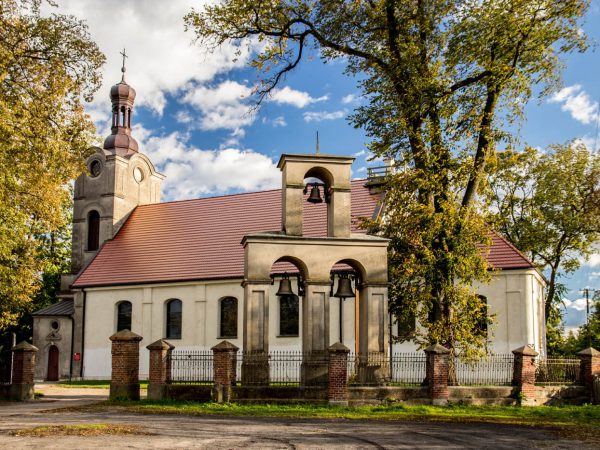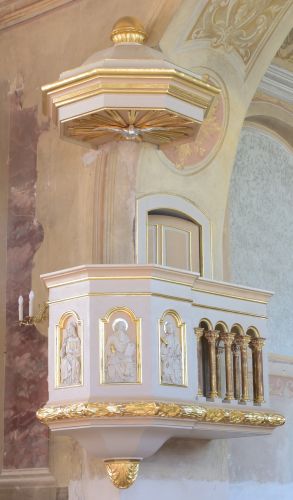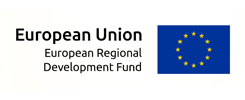
CIENIN KOŚCIELNY: church of St. Catherine of Alexandria
Date of construction: 1748-1802Monuments
Debate won

There is an image of the patron saint of the church, St. Catherine, in the side altar. The saint was born in Alexandria in the 3rd century and she came from a wealthy family. She was famous for her beauty and intelligence, and she was also well educated and, being a Christian, she took a vow of celibacy. During persecutions of Christians she was captured and forced to make an offering to idols. When she denied, the emperor ordered a religious dispute between Catherine and fifty philosophers. Catherine managed to defeat her opponents by showing the righteousness of Christianity which led many of them to convert to Christian faith. Angry emperor convicted her for torture by a means of a breaking wheel among others, which became her attribute. She died by beheading with sword when she was 18.
Ambo means ‘elevation’

Not many elements in church have lost their function in the process of technical development and which are completely abandoned in modern churches – such an element is a pulpit (Polish ambona from Latin ambo – ‘elevation’). It served to proclaim the word of God and to deliver sermons. It was put on a pillar or the rood screen, in a place between sacrum (chancel) and profanum (nave) considerably high above the floor so that the voice of priest reached the farthest corners of the church. A priest on in a pulpit delivered sermons in mother tongues, he interpreted the Bible and explained it for the faithful (the official language of the holy mass was Latin). The pulpit in the parish church in Cienin Kościelny had an unusual form. The doors in the rood screen lead to the pulpit, inside hidden steps go up to the elevation.
The basket of the pulpit have been decorated with bas-reliefs of images of the four Evangelists with their attributes (Mark with a lion, Matthew with a man, Luke with an ox and John with an eagle) and the image of Jesus Christ – with an open book with Greek letter alpha and omega which symbolize a beginning and an end.
Atributes with whom the Evangelists are presented are symbols of Christ: “As man he suffered, as lion he conquered, as eagle he flew, as ox sacrificed”.
Music is prayer
According to St. Augustine, “who sings, prays twice”, the complement to the Word of God proclaimed form the pulpit was liturgical singing in which all faithful should participate. Pipe-organs, organ cases and music gallery are indispensable elements of church. They are on the opposite side of the main altar which allows the sound of the organs to “float” above the heads of the faithful, to fill the space and complete celebrations. Organs create a sublime and solemn atmosphere and they enhance the mystery of the mass.

Credence table in the vestry

An object which little known – because it is hidden from the faithful who take part in the holy mass liturgy – is a credence table. The one from Cienin was made in the beginning of the 20th century in the eclectic style and represents a piece of work of an outstanding carpentering workshop. It is used to store liturgical vessels, books, table cloths and other objects necessary during the mass. Despite the fact that this particular piece of furniture has a practical function, it is not deprived of sophistication and aesthetic value. Rounded corners, wavy lines, precise key locks and the final shine are evidences that even object which are not exhibited publicly were also beautiful and carefully made.

